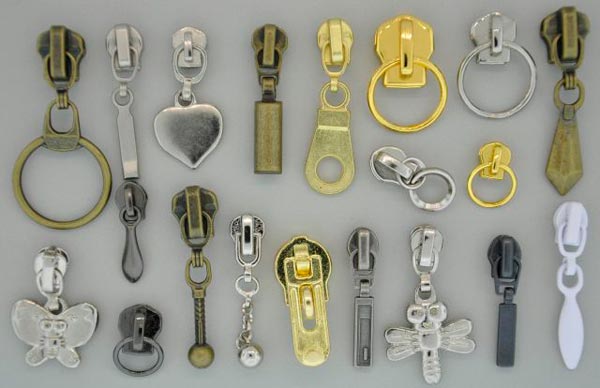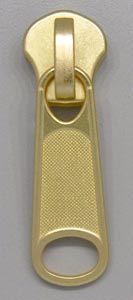 “Sliders” are really the simplest of things to use but are a complicated subject when it comes to understanding them and their application. There are literally thousands of kinds of sliders, and we have thousands of cases of tens of thousands of pieces of them to prove it! There is so much to explain here that we will only touch on it briefly to get you started so you can make some good choices right away, then you can review in depth details in Zipper 101 if you like. The important thing to remember is that sliders are defined by the chain they are to work on. Metal zipper chain needs to have sliders made specifically to work on metal zipper chain. Nylon coil zipper chain needs to have sliders made specifically to work on nylon coil zipper chain. Plastic zipper chain needs to have sliders made specifically to work on plastic zipper chain. Now I know what you are thinking, “I got it already”, but I have to make sure it is understood that only matched sliders and chain will work. Now, after you identify a nylon coil slider for the nylon coil chain for instance, you also need to make sure the gauge of the slider matches the gauge of the chain. ONLY a #3 nylon slider will fit #3 nylon coil chain. There are lots of caveats with sliders and they are all dealt with in Zipper 101, where I urge you to read more, especially if you are going to match sliders and chains purchased from two different sources; something I would advise against for the most part.
“Sliders” are really the simplest of things to use but are a complicated subject when it comes to understanding them and their application. There are literally thousands of kinds of sliders, and we have thousands of cases of tens of thousands of pieces of them to prove it! There is so much to explain here that we will only touch on it briefly to get you started so you can make some good choices right away, then you can review in depth details in Zipper 101 if you like. The important thing to remember is that sliders are defined by the chain they are to work on. Metal zipper chain needs to have sliders made specifically to work on metal zipper chain. Nylon coil zipper chain needs to have sliders made specifically to work on nylon coil zipper chain. Plastic zipper chain needs to have sliders made specifically to work on plastic zipper chain. Now I know what you are thinking, “I got it already”, but I have to make sure it is understood that only matched sliders and chain will work. Now, after you identify a nylon coil slider for the nylon coil chain for instance, you also need to make sure the gauge of the slider matches the gauge of the chain. ONLY a #3 nylon slider will fit #3 nylon coil chain. There are lots of caveats with sliders and they are all dealt with in Zipper 101, where I urge you to read more, especially if you are going to match sliders and chains purchased from two different sources; something I would advise against for the most part.
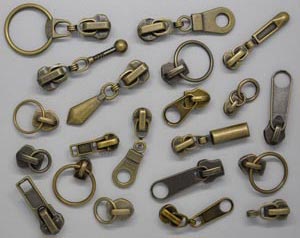
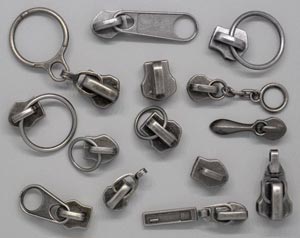
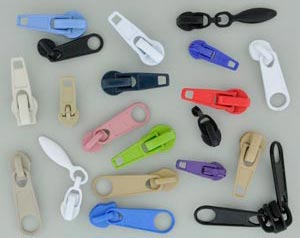
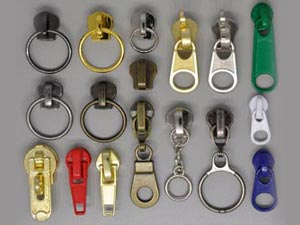
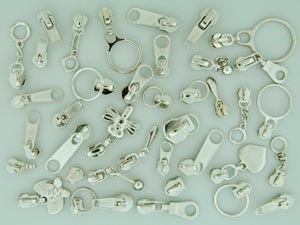
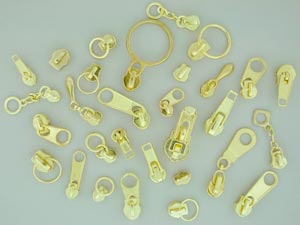
The main part of a slider is the body of the slider. This is the actual part of the slider that slips onto the zipper chain and runs up and down. To this body there could be no other parts at all or as many as four or five, really small parts, but parts non the less. The main part attached to the slider body would be the puller and would be the most common.
 +
+  =
= 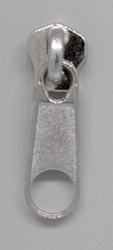
Now I would like to give a brief explanation of the different slider types and their functions. Simplest of all is the non lock slider. It is as its name implies; a slider that does not lock in any way. To refresh your memory of what is locking or not, I am referring to the slider body in relation to the zipper chain. The term locking means the slider stays put where you want it to as opposed to one that can move up and down the chain as the garment or item is moved about simply by casual contact or gravity. A non lock slider can move about on its own; it is used on things like futon covers or handbags. The next major type is the locking slider, one that stays where it is
put. This can happen automatically when it is released, or can happen
when a certain action is taken, like pushing the puller down to lay
parallel with the zipper chain. The types of locking sliders are many,
much more information can be found in Zipper 101.
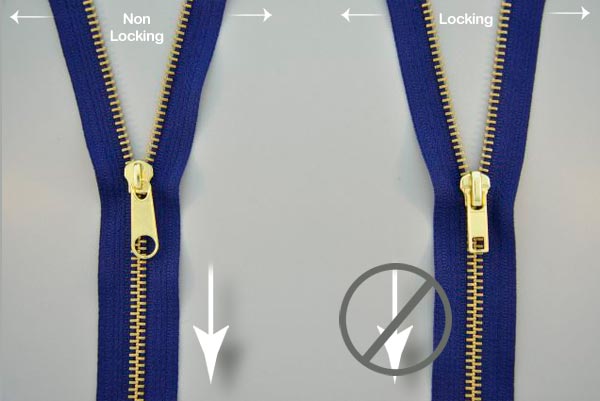
Everything else about sliders is variable and optional. There are literally thousands of puller combinations for any number of slider bodies. Some of the pullers affect the function of the slider and some are purely decorative as well as functional. For a Pin Lock slider for example, the puller is integral to the operation of the overall slider since the locking pin is actually on the puller, engaged only when the puller is pushed into the chain by the user. Some sliders are even defined by the overall combination of parts, like a small rounded short puller mounted to a non lock body is commonly referred to as a Bell Tab slider. The finishes we offer also can be overwhelming. Most sliders made for metal chains match the chain finish; antique brass chain would almost always dictate an antique brass finish on the slider. But on nylon coil or plastic chain, the slider finishes can be any shade of paint or any type of plated or oxidized finish imaginable.
